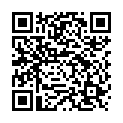|
|
|
| Module code: KIB-WEB |
|
|
2V+2U (4 hours per week) |
|
5 |
| Semester: 5 |
| Mandatory course: no |
Language of instruction:
German |
Assessment:
Written exam
[updated 19.02.2018]
|
KIB-WEB (P221-0023) Computer Science and Communication Systems, Bachelor, ASPO 01.10.2021
, semester 5, optional course
KIB-WEB (P221-0023) Computer Science and Communication Systems, Bachelor, ASPO 01.10.2022
, semester 5, optional course
PIB-WEB (P221-0023) Applied Informatics, Bachelor, ASPO 01.10.2022
, semester 5, mandatory course
PIB-WEB (P221-0023) Applied Informatics, Bachelor, SO 01.10.2026
, semester 3, mandatory course
Suitable for exchange students (learning agreement)
|
60 class hours (= 45 clock hours) over a 15-week period.
The total student study time is 150 hours (equivalent to 5 ECTS credits).
There are therefore 105 hours available for class preparation and follow-up work and exam preparation.
|
Recommended prerequisites (modules):
None.
|
Recommended as prerequisite for:
|
Module coordinator:
Prof. Dr. Maximilian Altmeyer |
Lecturer: Prof. Dr. Maximilian Altmeyer
[updated 11.11.2016]
|
Learning outcomes:
After successfully completing this module, students will be familiar with the structure of XML documents. They will be able to analyze the structure of existing documents and design a suitable schema. Students will be capable of converting XML documents with XSLT to HTML and creating a layout with CSS. They will be able to use JavaScript to access the content of XML documents (especially XHTML), process it, and output it in another format.
[updated 19.02.2018]
|
Module content:
XML basics
Unicode
XHTML
CSS
XSL Transformations (XSLT)
XPath
XML schemas
Document Object Model (DOM)
Principles of JavaScript
JavaScript and the Document Object Model
Events in JavaScript
JavaScript and CSS
[updated 19.02.2018]
|
Teaching methods/Media:
Lecture, demonstration, exercises
[updated 19.02.2018]
|
Recommended or required reading:
Flanagan, David: JavaScript - Das umfassende Referenzwerk, O┤Reilly, 2012.
Mozilla Developer Network, https://developer.mozilla.org/de/
Harold, E.R., MMeans W.S., XML in a Nutshell, O_Reilly, 2005
Kay, Michael: XSLT 2.0 and XPath 2.0 Programmer┤s Reference 4th edition, Wrox Press, 2008.
W3C: Extensible Markup Language (XML) 1.0 (Fifth Edition), https://www.w3.org/TR/xml/
[updated 19.02.2018]
|
Module offered in:
WS 2022/23,
WS 2021/22,
WS 2020/21,
WS 2019/20
|


